Clean power is the objective, but what about noise on the equipment grounding conductor and other grounding paths? How “clean” is your isolated (insulated) equipment grounding circuit? Chances are if you’ve been involved in the electrical field, you’ve had experiences either installing or inspecting isolated (insulated) equipment grounding circuits and receptacles. Clean power is not really defined.
Where sensitive electronic equipment is installed and used there are electrical circuit designs that are applied in the field that exceed the minimum requirements of the National Electrical Code. These designs are efforts to minimize electromagnetic interference (EMI) on the equipment grounding circuits. This interference is often referred to as electrical noise on the grounding circuits. This electrical noise can affect some electronic equipment and lead to data errors and loss in some cases. In the information technology world three characteristics are sought regarding electrical power supplying these systems. The first is reliability. The second is the quality of the power, and the third is minimizing electrical noise in the grounding circuits or other grounding paths.
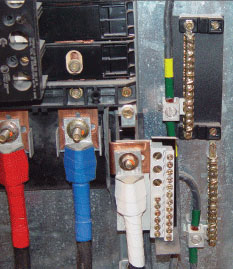
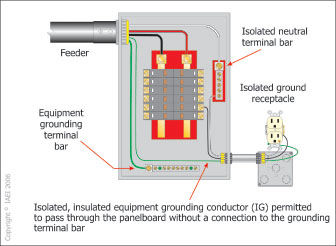
Objectionable currents over equipment grounding conductors and other grounding paths can contribute to electrical noise over grounding circuit conductors and other grounding paths. Objectionable currents over grounding circuits are often a result of improper neutral-to-ground connections on the load side of the service disconnection means or the load side of the point of grounding for a separately derived system. Remedial alternatives for eliminating or minimizing objectionable currents are addressed in 250.6 where objectionable currents are encountered, but it is essential that the effective ground-fault current paths remain continuous and functional [see Section 250.6(B)]. Safety always has to come first.
As mentioned earlier, these types of special circuits are usually part of designs that exceed minimum NEC requirements. They are not to be installed in place of the minimum required equipment grounding conductors specified in 250.134(A) and (B). For the purpose of this article, we’ll concentrate on equipment grounding conductors used with a system that is grounded. The performance criteria for grounding and bonding of circuits and equipment used in ungrounded systems is covered in 250.4(B).
Grounding and Bonding Essentials
When dealing with the topic of grounding and bonding, it is best to review the basics of both concepts. Grounding basically means connecting something (usually non-current-carrying conductive parts of equipment) to the earth. Bonding basically means connecting conductive objects together. Bonding establishes continuity and conductivity. The reasons for bonding non-current-carrying conductive parts together are provided in 250.4(A)(3) and (4). The prescriptive requirements for bonding are also provided in Part V of Article 250.
Feeders, defined in Article 100 of the Code, are generally required by Section 215.6 to include an equipment grounding conductor for connection of branch-circuit equipment grounding conductors where the feeder terminates in a branch-circuit panelboard (figure 1 and photo 1). Branch circuits are generally required to include an equipment grounding conductor as specified in Section 250.134(A) and (B).
Effective Ground-Fault Current Path
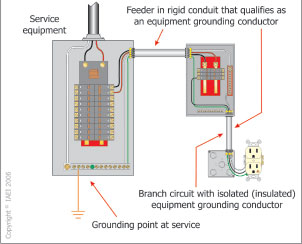
Figure 2. Effective ground-fault current path provided by the rigid metal conduit and isolated equipment grounding conductor connected to the isolated ground receptacle
Sections 250.4(A) and (B) outline the performance criteria for grounding and bonding. This section provides information about the purpose of grounding and bonding and what each function is required to accomplish. Section 250.4(A)(1) covers grounding electrical systems. Section 250.4(A)(2) covers grounding electrical equipment. The conductor used for equipment grounding is defined in Article 100 as the equipment grounding conductor. This conductor provides two essential functions in the same conductor. First, it serves as the grounding connection for equipment at the branch-circuit outlets, which meets the criteria in 250.4(A)(2). Second, it must also provide an effective ground-fault current path as specified in 250.4(A)(5). For safety, both functions must remain in service (figure 2).
Installing Isolated Grounding Circuits
For a truly clean isolated (insulated) equipment grounding conductor, the insulated equipment grounding conductor must remain insulated all the way to the point of grounding at the applicable service or separately derived system. Does it have to, in order to meet the provisions of Section 250.146(D)? The answer is no. Section 250.146(D) is permissive text which allows the insulated equipment grounding conductor to pass through one or more panelboards or other enclosures without a grounding connection so as to terminate at the grounding point at the service or separately derived system. Similar provisions are located in Section 408.40 Exception.
Obviously it is better from a design standpoint to keep this isolated (insulated) equipment grounding conductor all the way back to the source or service, but in meeting the minimum requirements of the NEC, it is not necessary to connect at that point, but it definitely is required to be connected to the equipment grounding conductor of the system at some point to meet the requirements of 250.4(A)(5).
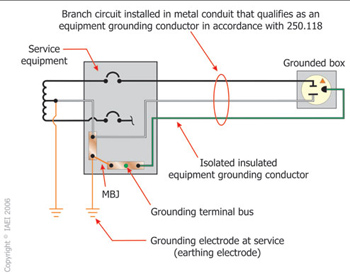
Figure 3. Fundamentals of isolated (insulated) equipment grounding conductors
The equipment grounding conductor must be an effective ground-fault current path, even if it is an isolated (insulated) equipment grounding conductor with the branch circuit. From an installer’s and inspector’s perspective, where isolated (insulated) equipment grounding conductors are installed, two separate equipment grounding conductor paths are necessary with the branch circuit. One will be provided to serve as the required equipment grounding conductor of the wiring method and enclosusres. The other will be the additional isolated (insulated) equipment grounding conductor which will terminate directly on the isolated grounding receptacle (figure 3). Section 250.118 provides a list of wiring methods that qualify as equipment grounding conductors.
Isolated Ground Receptacles

Figure 4. Isolated ground receptacles identified by an orange triangle on the receptacle face
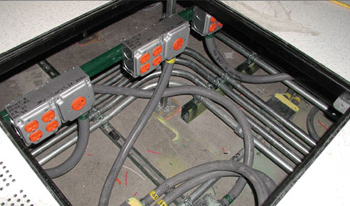
Photo 2. Isolated ground receptacles installed under a raised floor in an information technology room
Isolated ground receptacles are intended to be used for reduction of electromagnetic interferences as previously reviewed in this article. These receptacles have a grounding terminal that is purposely insulated for connection to the isolated equipment grounding conductor of the branch circuit when installed in an outlet box.
Isolated ground receptacles are required to be identified by an orange triangle located on the receptacle (figure 4 and photo 2). The UL category in the General Information for Electrical Equipment Directory (RTRT) is where additional information about isolated ground receptacles can be found.
Supplementary Grounding Electrodes Permitted
Where isolated (insulated) circuits are installed, there is often a desire to install a separate connection to the earth at the equipment location. This electrode is known as a supplementary grounding electrode. Supplementary grounding electrodes are permitted under the provisions of 250.54, not to be confused with the supplemental grounding electrode for a water pipe electrode required by Section 250.53(D)(2). Installation of supplementary grounding electrodes does not relieve the requirement for connection of an equipment grounding conductor. Where a supplementary grounding electrode is installed, both the equipment grounding conductor and the grounding conductor to the electrode must be connected to the equipment (figure 4). Supplementary grounding electrodes are often installed and connected to metallic light poles in parking lots. This is not a requirement of the NEC, but desired for many designs. It is a violation of the Code to eliminate the required equipment grounding conductor and would be a safety hazard. Sections 250.4(A)(5) and 250.54 both clearly indicate that the earth is not permitted to be used as an effective ground-fault current path.
Wiring Methods
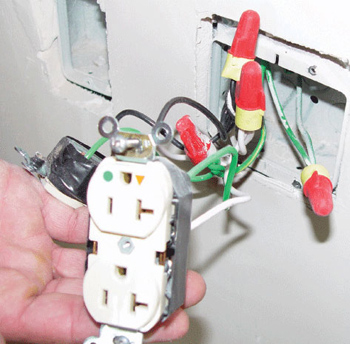
Photo 3. MC Cable that includes isolated (insulated) equipment grounding conductors
There are several wiring methods that qualify as equipment grounding conductors as provided in Section 250.118. Equipment grounding conductors can be conduit, tubing, wire, or any of the other qualifying materials or wiring methods included in this section. Where isolated (insulated) equipment grounding conductors are installed with the branch circuit, there will likely be two equipment grounding conductor paths. The first path will be the required equipment grounding conductor; the next path will be the desired isolated (insulated) equipment grounding conductor. The first path could be the metallic conduit, tubing, cable armor, etc. However, the second path will always be an insulated conductor of the wire type. Sometimes a cable assembly such as MC Cable will include two insulated conductors of the wire type for use with these circuits. The two equipment grounding conductors will generally be identified as green, and green with one or more yellow stripes in accordance with 250.119 to distinguish between them (photos 3 and 4).
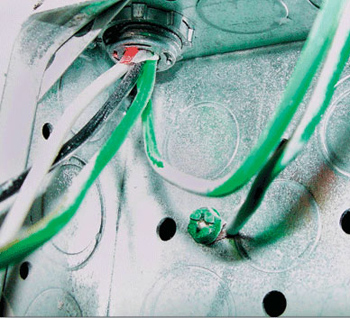
Photo 4. Isolated (insulated) equipment grounding conductor of the cable connects directly to the IG receptacle, while the branch circuit equipment grounding conductor is connected to the box as required in Section 250.148
Isolated Grounding Receptacles in Patient Care Locations
Another important consideration for isolated (insulated) equipment grounding conductor installations is where they are installed in patient care locations. In these branch circuits two equipment grounding conductor paths are required by 517.13(A) and (B). If an IG receptacle or circuit with an isolated (insulated) equipment grounding conductor is desired in the design for a patient care location, then an additional equipment grounding conductor path will be required for the branch circuit. This results in three equipment grounding conductor paths (photo 5).
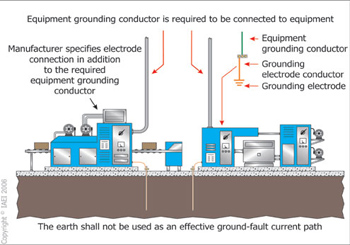
Figure 5. Equipment grounding conductors and grounding conductor from supplementary grounding electrode must both connect to the equipment
The FPN to Section 517.16 provides information that cautions users about the installation of such a system with receptacles having insulated grounding terminals because the grounding impedance is controlled only by the equipment grounding conductors and does not benefit functionally from any parallel grounding paths. This type of installation is typically used where a reduction of electrical noise (electromagnetic interference) is necessary and parallel grounding paths are to be avoided. Basically this means that the isolated (insulated) equipment grounding conductor does not provide the benefit of being in parallel with the equipment grounding conductor circuits required in 517.13(A) and (B). Be careful here to ensure that the requirements of 517.13(A) and (B) are met in addition to any isolated (insulated) equipment grounding conductor for an IG receptacle or other equipment (figure 5).
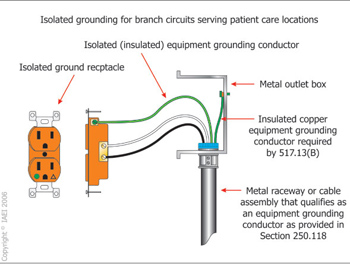
Figure 6. Branch circuit supplying isolated (insulated) grounding receptacles in patient care locations requires three equipment grounding conductor paths
Summary
Isolated (insulated) equipment grounding circuits must provide an effective ground-fault current path in addition to providing a clean grounding connection for the equipment. Essentially the isolated (insulated) equipment grounding conductor serves both purposes. The required equipment grounding conductors must always be in place and effective in addition to any desired isolated (insulated) equipment grounding conductor. Where designs call for more specialized equipment grounding means for reducing unwanted electromagnetic interference on the grounding circuit, usually an additional insulated equipment grounding conductor path is installed. In the patient care areas of health care facilities, where isolated (insulated) equipment grounding circuits are installed with the branch circuits, there will be three equipment grounding conductor paths. Remember to meet the requirements in 517.13(A) and (B) in addition to any desired isolated (insulated) equipment grounding that may be desired. A go
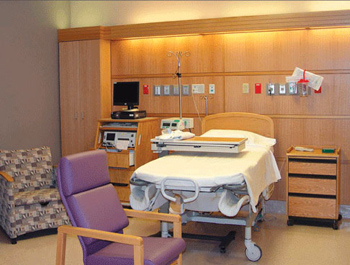
Photo 5. Isolated (insulated) equipment grouding for circuits in patient care areas of health care facillities. Three equipment grounding conductor paths are required as indicated in 517.16 (See also the FPN to 517.16)
od way to approach these installations is to always strive to satisfy what is required by the minimum requirements of the NEC before applying any desired isolated (insulated) equipment grounding circuits. Safety must not be compromised.











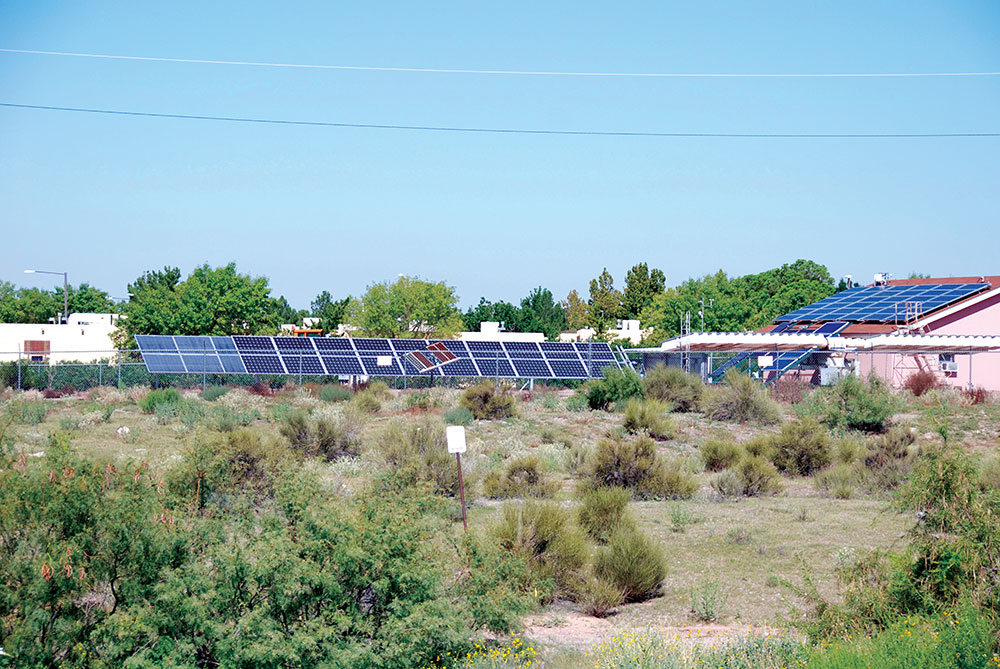
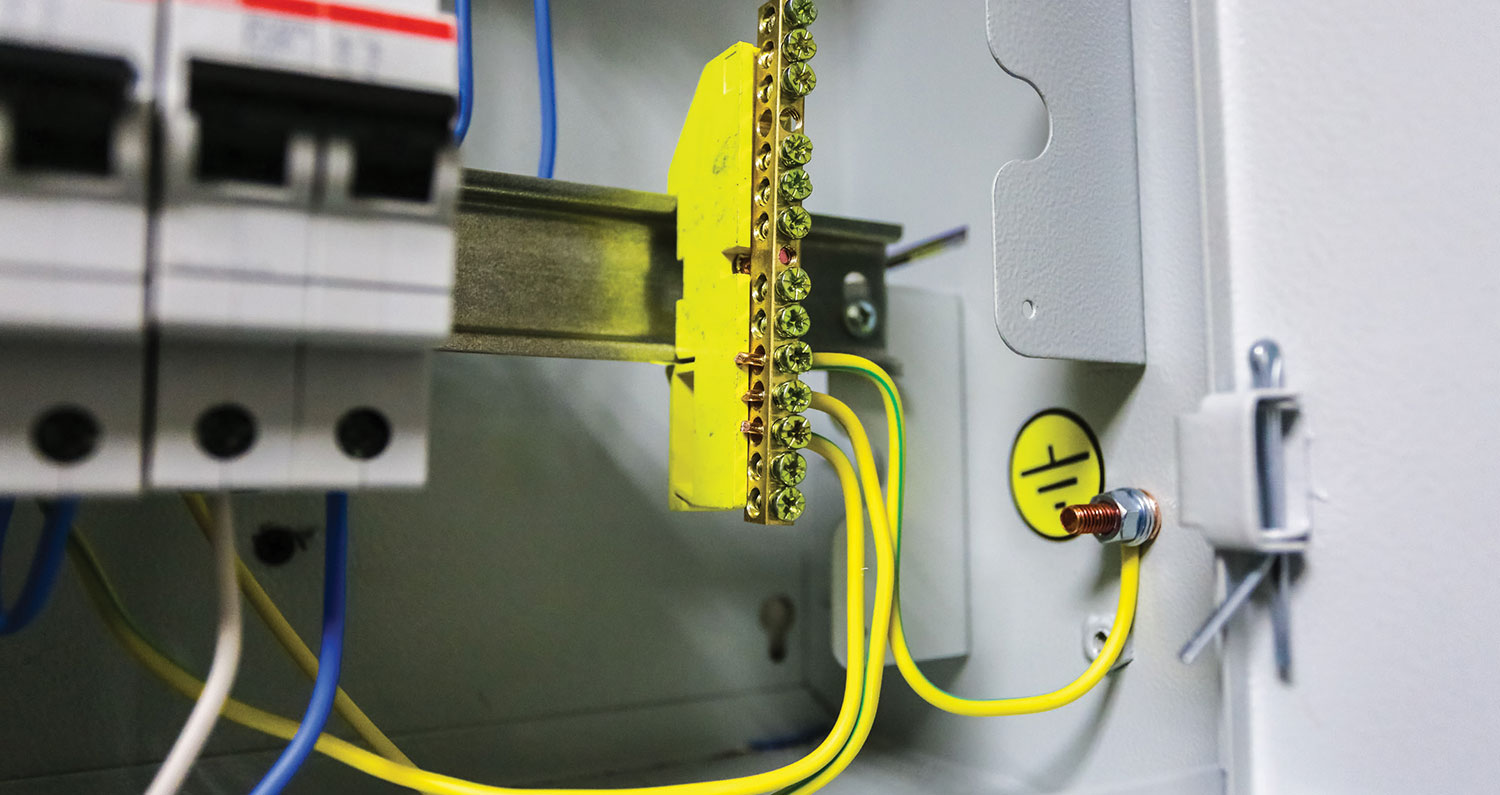
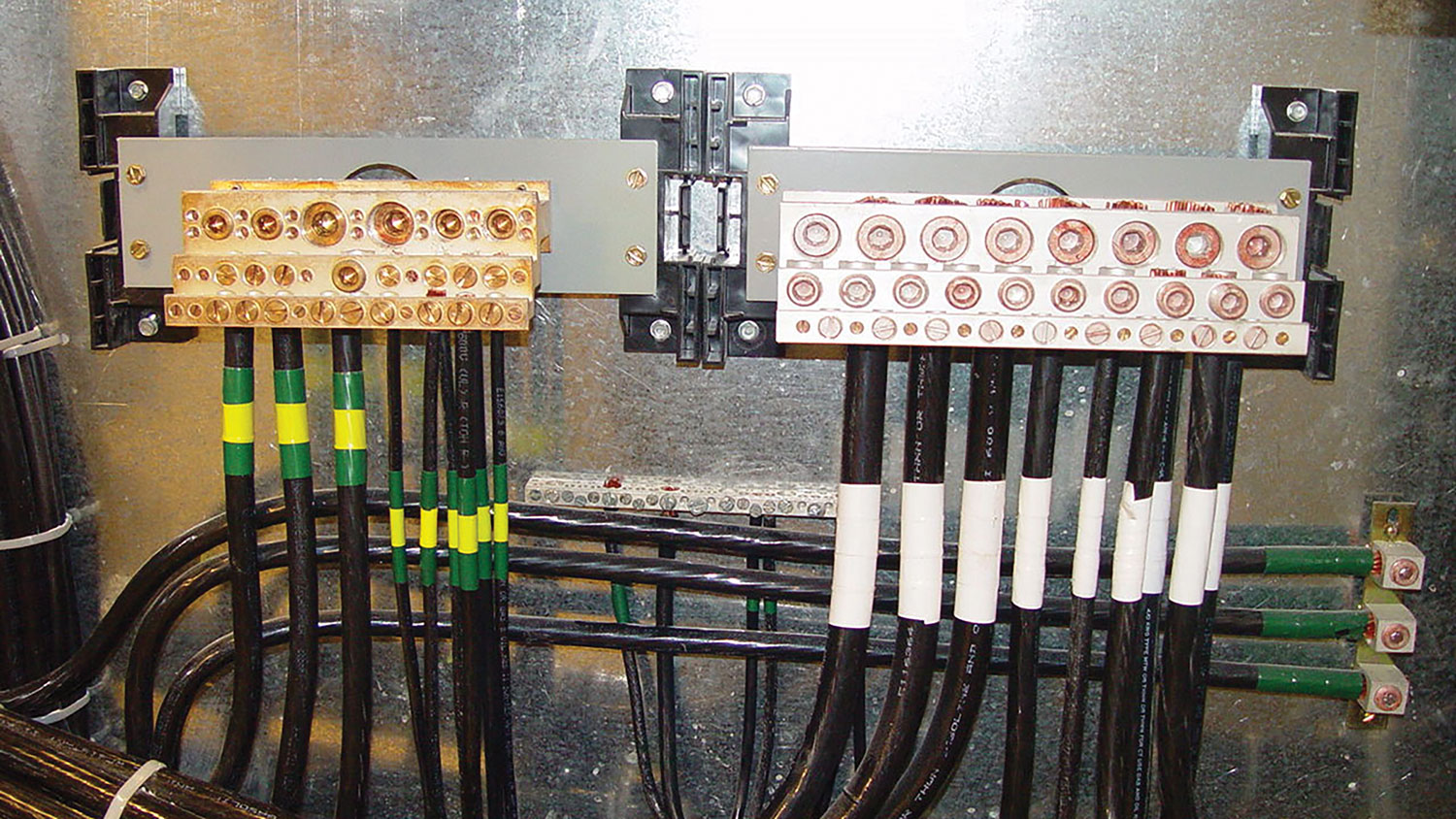
Find Us on Socials